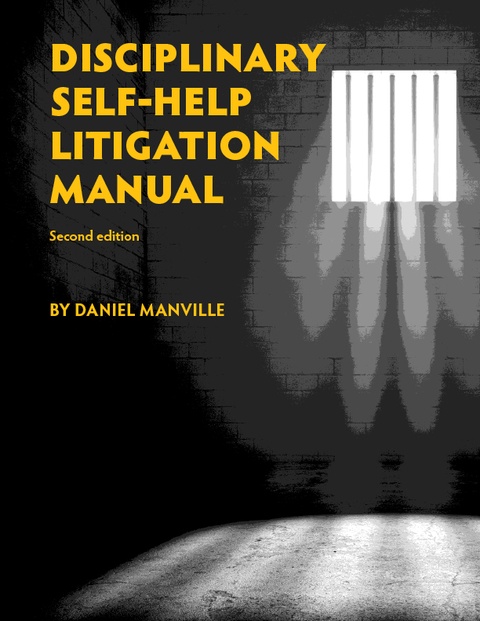California Court of Appeal Issues Writ of Mandate Directing Superior Court to Hold Evidentiary Hearing Under State’s Racial Justice Act, Ruling Defendant Provided Sufficient Evidence to Establish Prima Facie Claim of Implicit Bias by San Diego Police
The California Court of Appeal, Fourth Appellate District, granted a petition for a writ of mandate after finding that Elijah Jackson, who is Black, established a prima facie claim that the San Diego Police Department (“SDPD”) violated the Racial Justice Act of 2020 (“RJA”) by producing data showing a stark disparity in how the SDPD treats Black motorists during traffic stops compared to how White motorists are treated and that, if such data is true, Jackson established a substantial likelihood of implicit bias by the SDPD.
Background
Elijah Jackson was pulled over by several SDPD police officers for having illegally tinted windows on the car he was driving. During the traffic stop, officers searched the vehicle and found an unregistered loaded firearm. Jackson was charged with carrying an unregistered loaded firearm.
At the preliminary hearing, it was established that four SDPD officers were conducting an operation to “saturate” the Skyline Hills neighborhood to “suppress any violent crime going on and show [their] presence in the area,” which included the four officers driving around looking for people they recognized as having warrants as well as deterring any potential crime by their presence. Officer Cameron Watson explained during the hearing that the Skyline Hills neighborhood is “particularly violent,” as it was a neighborhood claimed by the criminal street gang called Skyline Piru, a Blood set with gang members often wearing the color red.
Officer Watson testified that on the day in question, he observed a car, driven by Jackson, with illegally tinted windows. He watched Jackson park the car at a strip mall and go inside a smoke shop. He was accompanied by his younger brother, who is also Black. Jackson was wearing a black jacket, black hat, and a black “Pooh Shiesty” ski mask (a style named after a rapper that contains an opening for the eyes, nose, and mouth). Jackson’s brother was wearing red pants, which Watson noted was often worn by gang members in the area.
During his testimony, Watson confirmed that neither Jackson nor his brother did anything that made him suspect they were a threat before and while they were in the smoke shop. Watson further testified that he waited until Jackson and his brother drove away from the smoke shop, followed the car for a few minutes, and then initiated a traffic stop for the illegally tinted windows. During the traffic stop, three additional officers joined Watson, and Jackson “appeared nervous” and seemed to be “trying to rush the traffic stop.”
When one of the other officers observed a baseball bat on the floor between the driver’s seat and the door, Jackson provided “multiple answers,” including that it was for baseball, that it was his mother’s car, and that it was for protection. Based on the bat, the ski mask, his brother’s red pants, and Jackson’s admission to living in an apartment complex with a history of violence, Watson asked the brothers to exit the car to allow for a pat-down search and search for weapons inside the vehicle to ensure the officers’ safety. This search then led to the discovery of the unregistered loaded firearm that was located in the center console.
At the conclusion of the preliminary hearing, the trial court denied Jackson’s motion to suppress the firearm on the grounds that the search was lawful. After the People filed an amended felony complaint, Jackson filed a motion for relief under the RJA, arguing that Watson’s actions and speech demonstrated racial bias against him. In the motion, Jackson submitted evidence that he and his brother had been pulled over by the same officers for illegally tinted windows multiple times but never received a citation, that recent traffic stops by the same officers followed a similar pattern of stopping suspected gang members’ cars for tinted windows as an alleged pretext to question the driver and search for illegal items, and media interviews and newspaper articles showing SDPD was aware of various studies showing discrimination and racism by its officers but has ignored such studies.
Jackson also provided statistical evidence indicating that SDPD officers disproportionately conduct traffic stops and searches on Black and Latino residents and focus “saturation patrols” in minority neighborhoods. Such statistics showed that Black people in San Diego were subject to force by SDPD 4.6 times as often as White people, and while Blacks make up only 6.2 percent of the population of San Diego, they comprised 23 percent of all people stopped between 2018 and 2020. Additionally, 74 percent of officers who made stops of Black people did so at rates that were higher than the proportion of Black people in the same area patrolled.
In opposition, the People argued that Jackson failed to provide evidence indicating that the SDPD officers who conducted the particular stop in this case exhibited bias or animus towards Jackson or his brother based on their race, ethnicity, or national origin and cautioned the court not to impute implicit bias to specific officers based simply on general statistics, data, and articles.
The trial court held an initial hearing to determine whether Jackson established a prima facie showing of a RJA violation to warrant an evidentiary hearing. At the hearing, Jackson argued that he met his burden based on the gang saturation units in certain neighborhoods, SDPD’s concentration in minority neighborhoods in San Diego, the ongoing harassment of Jackson and his brother by the same officers, the fact that the officers were not “scared of” Jackson as they allowed him to reach into the glove compartment to obtain proof of insurance, and the statistics about the differences in traffic stops of Black and White people. The People, on the other hand, encouraged the trial court to give the statistics little weight in assessing officer Watson’s conduct in this specific traffic stop.
After analyzing the case of Bonds v. Superior Court, 99 Cal. App. 5th 821 (2024), and inquiring of the parties how the court could find implicit bias on the part of the officers making this stop, the trial court concluded that because the facts were not in dispute, the court did not find Jackson met the prima facie standard that the officers’ actions were racially motivated and denied the motion. Jackson timely filed a petition for a writ of mandate seeking an evidentiary hearing. The People filed a return, and Jackson filed a traverse.
Analysis
The issue before the Court was whether Jackson established that there was a substantial likelihood that Watson’s actions (as well as those of his fellow officers) were motivated by implicit bias.
As an initial matter, the Court disagreed with the People that writ relief was not warranted. While the People argued that there were no extraordinary circumstances because Jackson could appeal the issue after a conviction, the Court noted that the RJA is a fairly new piece of legislation, which generally requires courts to address novel issues of law. See Bonds. Due to the newness of the RJA and lack of sufficient authority addressing a petitioner’s burden at the prima facie stage to establish the likelihood of implicit bias and the waste of judicial resources that would result should the Court allow this case to proceed to trial if it should have never proceeded in the first place, the Court exercised its discretion and addressed the writ on the merits.
The RJA, codified in California Penal Code in three interrelated statutes—§§ 745, 1473(f), and 1437.7(a)(3), provides in pertinent part that the “state shall not seek or obtain a criminal conviction or seek, obtain, or impose a sentence on the basis of race, ethnicity, or national origin.” § 745(a). The RJA specifies four categories of conduct, any one of which, if proven by the preponderance of the evidence, establishes a violation. Id. As relates to this case, a violation exists when “(1) [t]he judge, an attorney in the case, a law enforcement officer involved in the case, an expert witness, or juror, exhibited bias or animus towards the defendant because of the defendant’s race, ethnicity, or national origin.” § 745(a)(1).
When a defendant files a motion alleging a RJA violation, the first step is for the trial court to determine whether the defendant has made “a prima facie showing of a violation,” Cal. Pen. Code§ 745(c), which means that “the defendant produces facts that, if true, establish that there is a substantial likelihood that a violation of subdivision (c) occurred.” § 745(b)(2).
A “substantial likelihood” requires more than a possibility but less than a standard of more likely than not. § 745. A “defendant seeking relief under the [RJA] must state fully and with particularity the facts on which relief is sought, and include copies of reasonably available documentary evidence supporting the claim. The court should accept the truth of defendant’s allegations, including expert evidence and statistics, unless the allegations are conclusory, unsupported by the evidence presented in support of the claim or demonstrably contradicted by the court’s own records … [T]he court should not make credibility determination at the prima facie stage.” Finley v. Superior Court, 95 Cal. App. 5th 12 (2023).
The Court stated that “implicit bias is, by definition, unintentional and unconscious … [and] can appear at multiple levels. Certainly, an officer (or other participant in the criminal justice process), observing that a defendant is Black, could ‘unintentionally’ treat them differently… [I]mplicit bias can manifest itself in other ways based on unstated or even unconscious assumptions.” See Bonds. The Court reiterated that there is no brightline rule or test to apply to every inquiry into the possible existence of implicit bias under the RJA, because “the very nature of such unintentional and unconscious bias does not lend itself to a simple, one size fits all, analysis … [which] type of inquiry requires a case by case approach based on the unique evidence offered.”
The Court considered the evidence that Jackson presented. First, the Court concluded that the data provided by Jackson clearly showed a disparity in the treatment of Black people pulled over by SDPD compared to White people. This data “provides a lens through which the trial court should have viewed the other evidence provided by Jackson, especially at the prima facie stage,” the Court stated. It noted that Jackson, a Black man, was more likely to be pulled over for equipment problems and searched than a White person, which was bolstered by the evidence that he and his brother were pulled over several times by the same officers for the same alleged equipment problem over the past couple of years as well as questioned about tattoos and gang affiliation but never received a citation for illegally tinted windows.
The Court further noted that the officers were engaged in “saturation” policing, noticed Jackson’s brother’s red pants, and speculated they may be gang members of the Skyline Piru Blood gang. Upon pulling them over for illegally tinted windows, Watson focused his investigation on whether Jackson or his brother had weapons or drugs in the car rather than on the alleged reason for the stop (illegally tinted windows). Thus, the Court concluded that “Jackson did enough to show there is a substantial likelihood of a violation of the” RJA.
Conclusion
The Court explained: “we believe the prudent course is for the trial court to grant an evidentiary hearing and consider anew Jackson’s motion under the Racial Justice Act. We express no opinion whether the court should find a violation of the Racial Justice Act after holding such an evidentiary hearing.”
Accordingly, the Court issued a writ of mandate, directing the superior court to vacate its order denying Jackson’s motion and to hold an evidentiary hearing under § 745(c) of the RJA. See: Jackson v. Superior Court, 109 Cal. App. 5th 372 (2025).
Editor’s note: As the Court observed in its opinion, an implicit bias “inquiry requires a case by case approach based on the unique evidence offered.” A thorough and nuanced examination of all the evidence provided to the Court in this case is well beyond the scope of the foregoing summary of the Court’s opinion. Thus, anyone with an interest in the issue of implicit bias and the Racial Justice Act is encouraged to read the Court’s full opinion to gain a deeper understanding of why the Court reached its decision.
As a digital subscriber to Criminal Legal News, you can access full text and downloads for this and other premium content.
Already a subscriber? Login
Related legal case
Jackson v. Superior Court
| Year | 2025 |
|---|---|
| Cite | 109 Cal. App. 5th 372 (2025) |
| Level | State Court of Appeals |





